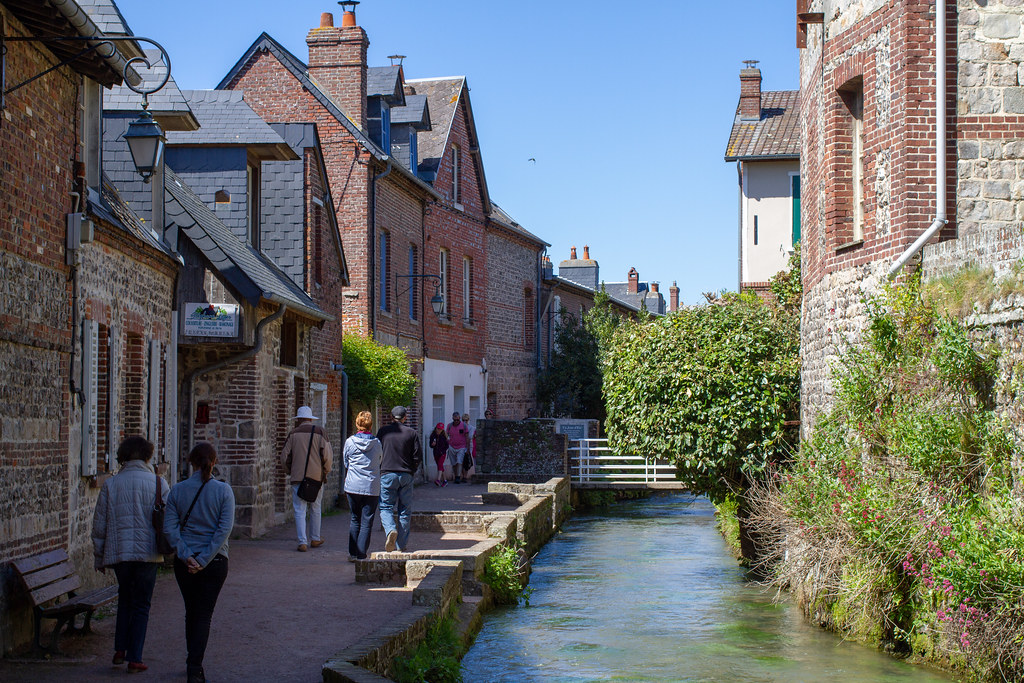Date and Time of Visit: May 4, 2018, approximately 2:00 p.m.
This year’s GW, which is shorter than usual, saw me visit the newly added villages of Northern France.
In September 2017, another beautiful new village was
I visited a village called “Veules-les-Roses” in the north of Normandy, almost near the Nord department. The place belongs to the area of Fécamp, Dieppe, the so called Pay de Caux.
This village officially joined the list of France’s most beautiful villages last year on September 30, 2017. Coincidentally, my visit to Brouage, which was added in June of the same year, took place a week later on September 23, 2017, which means that my complete conquest of France’s most beautiful villages fell apart in just one week.
There are several villages in the Normandy region that have been voted the most beautiful village in France, but Voule-les-Roses is the first village in the Seine-Maritime department to be voted the most beautiful village in France. There are not many villages in the north of France to begin with. There are not many villages in the north of France, especially not in the neighboring department of Nord. The most beautiful villages in France have their roots in Aquitaine and the Midi-Pyrenees, and are generally located in the high south and low north.
Because of this, I have visited many regions of France through my tour of France’s most beautiful villages, but I had never actually visited the northern part of Normandy (Haute Normandie), the Nord department. It was only after 2014, when I first completed the complete tour of the most beautiful villages, that I finally visited there for the first time, especially the famous tourist spots in Normandy such as Etretat.
Village History
Voulez-les-Roses is located further northeast of Etretat. This area is known as the Pays de Caux, and its scenery is famous as a motif in the works of Impressionist painters such as Monet. Monet was born in this area, and Boudin, who was from Le Havre and was a member of the Gaillard school, contributed greatly to the birth of Impressionism.
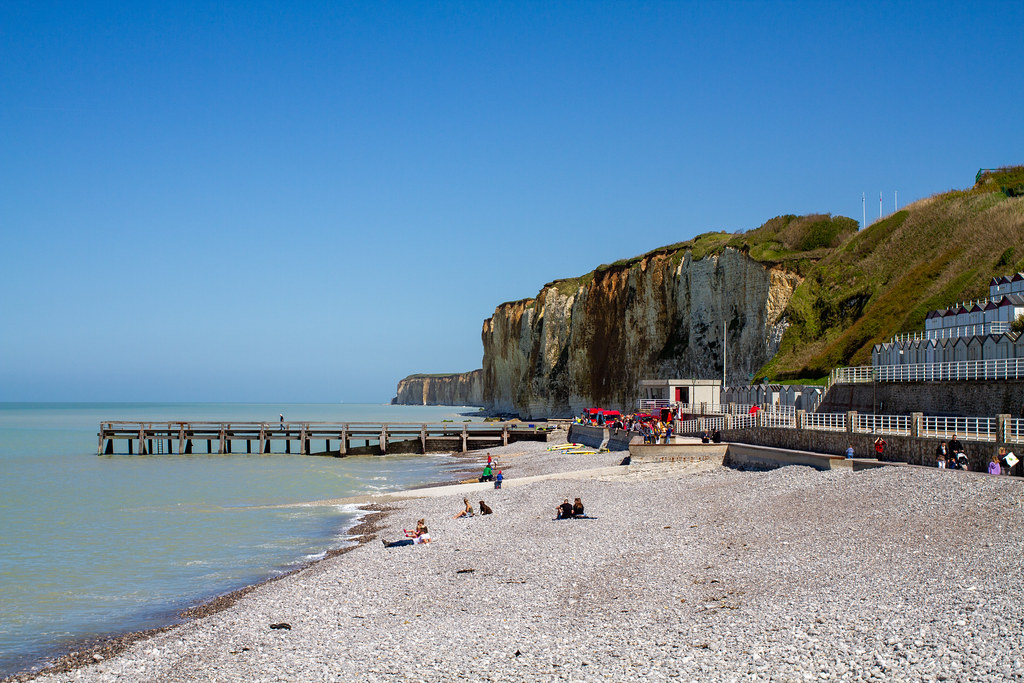
Pays de Côtes itself seems to be a very historic area. The town of Fécamp, which I visited before my visit to this village, and Jumièges, which I visited two years ago and which is a little further inland, had a monastery built around the 7th century.
And Voule-les-Roses seems to be an old village as well. The name of the village comes from the late Saxon “Well = waterside”. The chapel and the small chapel in the village are said to be from the 12th century.
There used to be a church of St. Nicholas in the village, which dates back to the 13th century, but it no longer exists. Instead, the church of St. Martin was built on top of it, and it is the church in the center of the village. The church was destroyed during the Anglo-French Hundred Years War, except for the tower, but it was rebuilt in the 16th century.
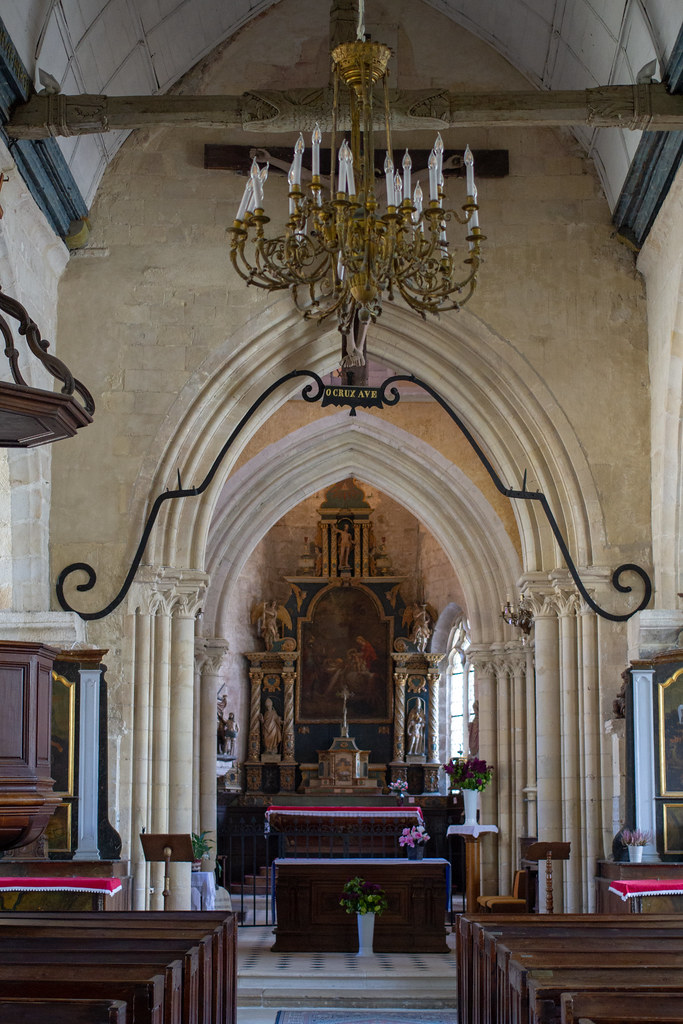
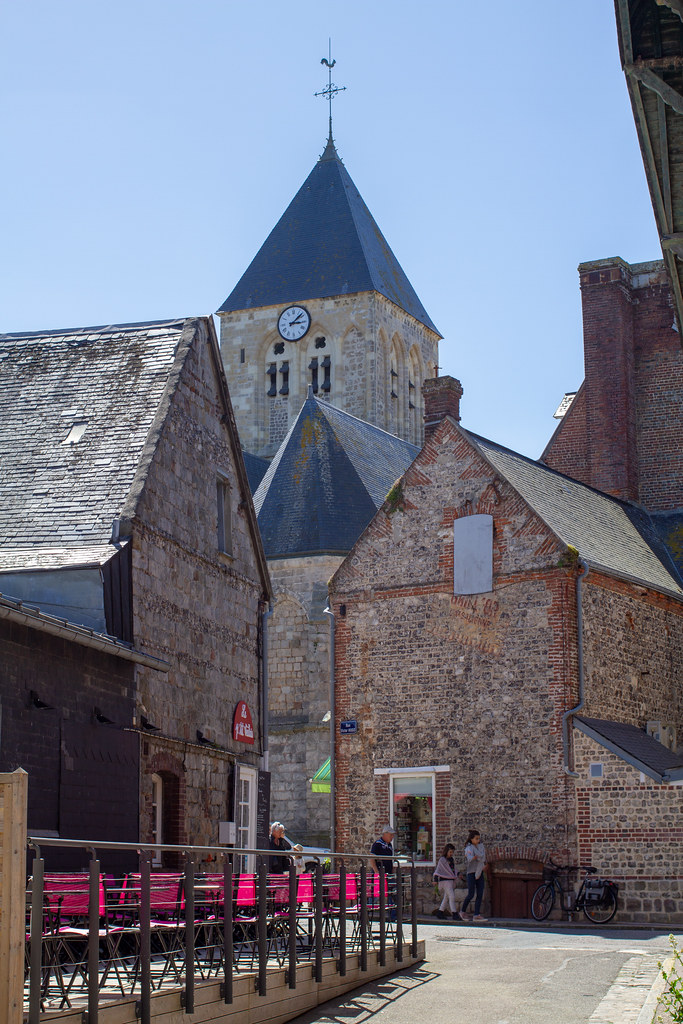
After the Hundred Years’ War, there was a period of peace, but in the 17th century, when religious wars broke out all over Europe, agriculture and commerce were devastated (how exactly they affected the area), and the population of Voule-les-Roses seems to have plummeted. Many of the inhabitants seem to have migrated to nearby Dieppe and Fécamp.
The village
The weather at the time of our visit was fine, with not a cloud in the sky, and it was a bit windy at the seaside in early May, so it was a bit chilly in short sleeves, but the weather was perfect for a stroll. It was a Friday when I visited, but I was surprised at the number of tourists. It was hard to find a parking lot. The parking lot is full, and it is hard to find a place to park on the street unavoidably. Because it was crowded, there was enough space even on the street.
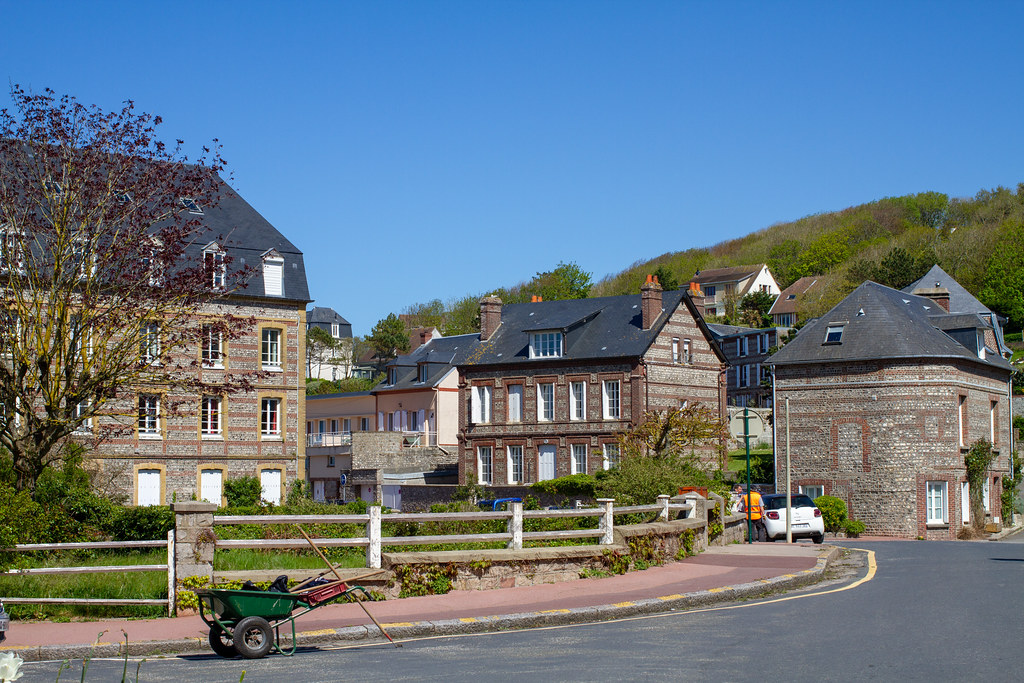
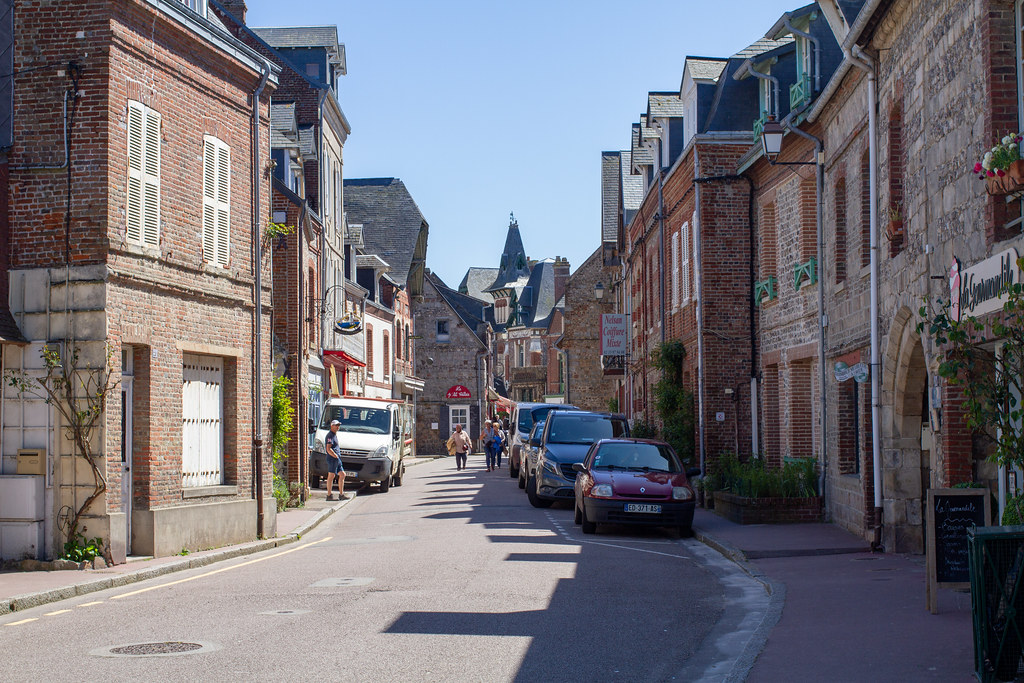
The village was full of houses made of red bricks like those often seen in Normandy and Picardy.
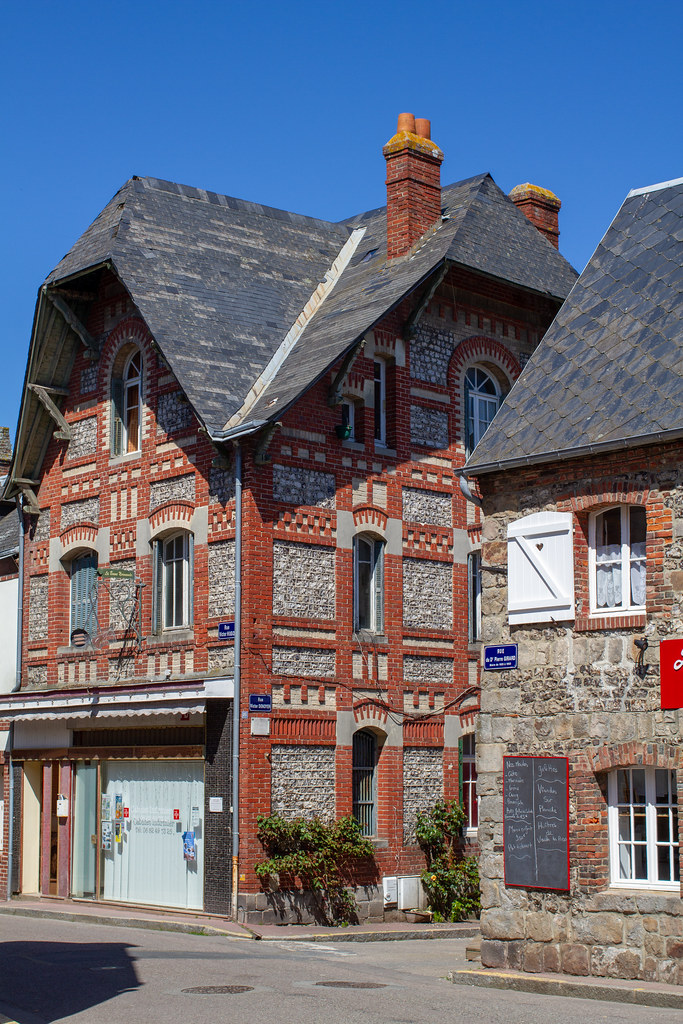
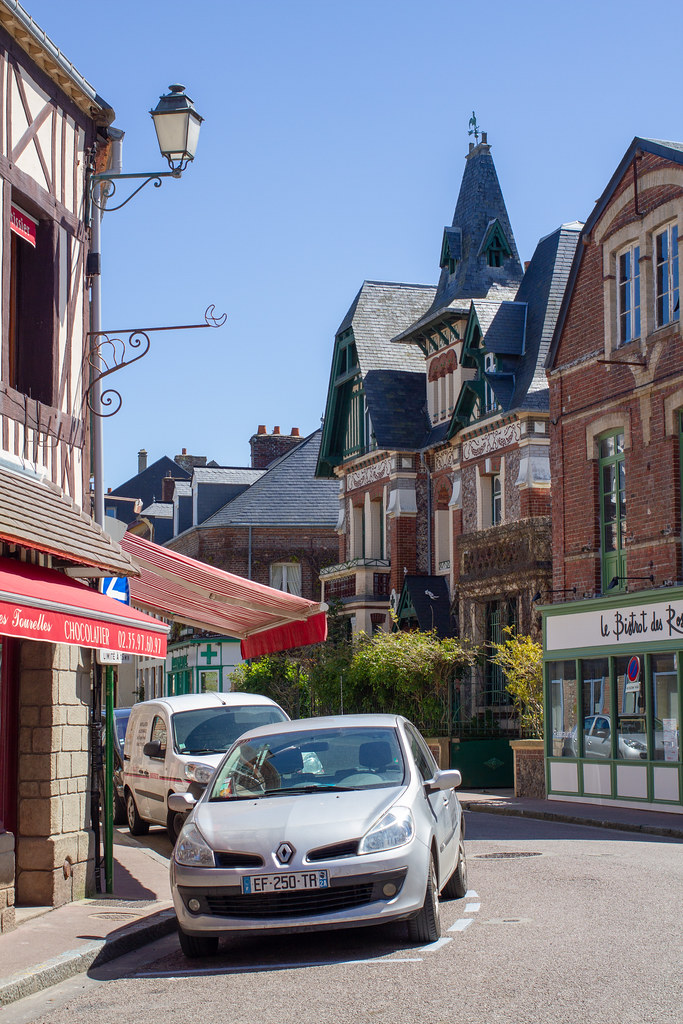
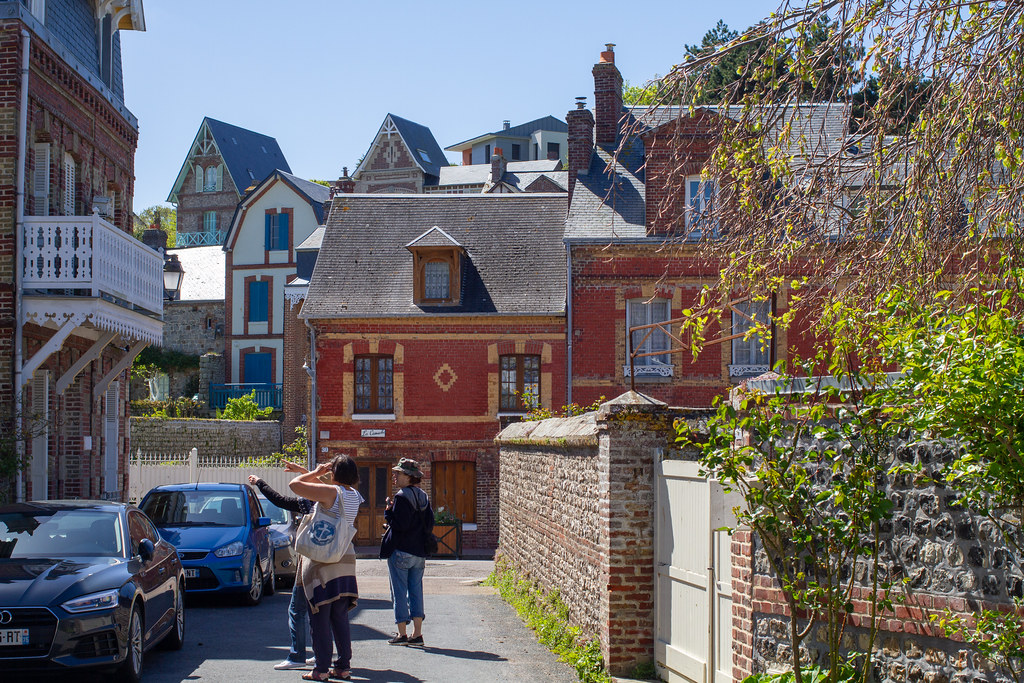

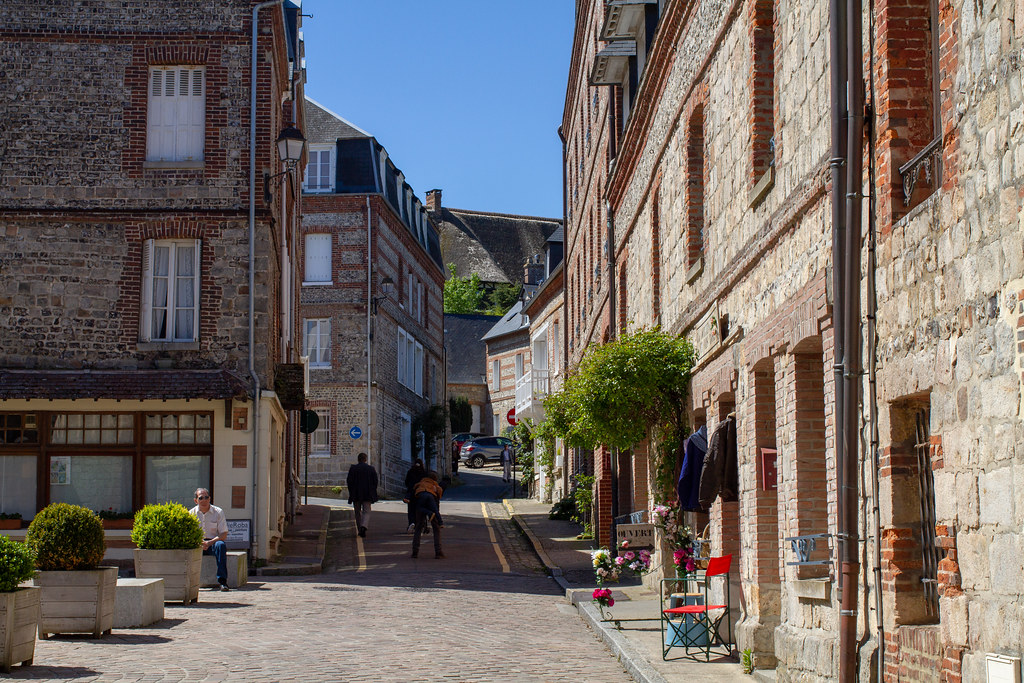
And what can I say, the village by the sea is refreshing and pleasant. As you can see, it was a beautiful day!

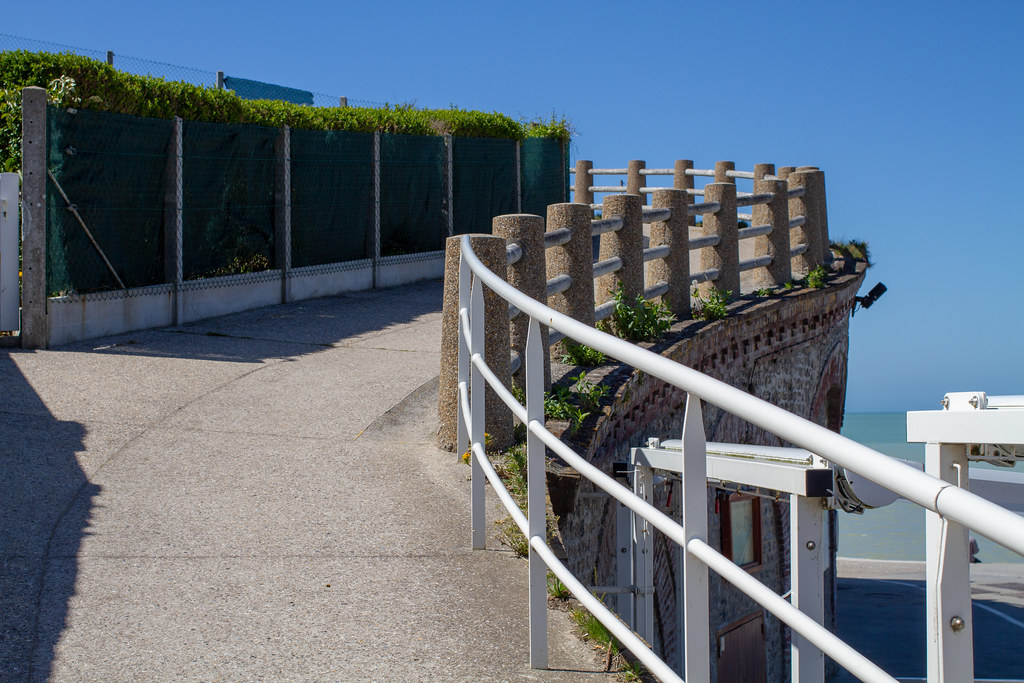

It is not only the seaside that reflects the water. The waterways in the village were also very quaint.
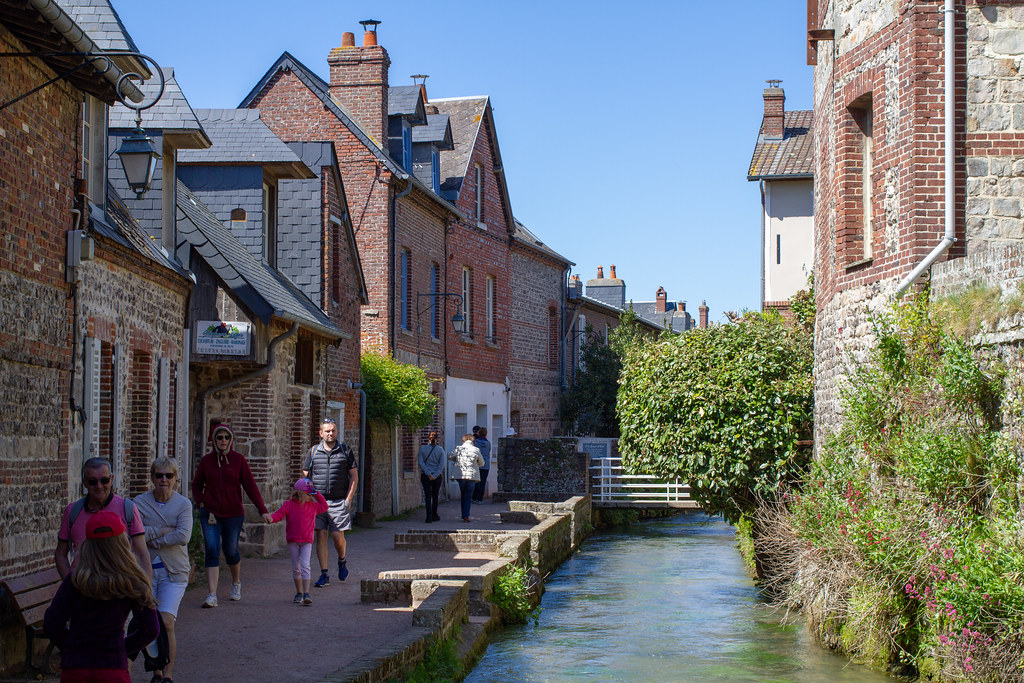
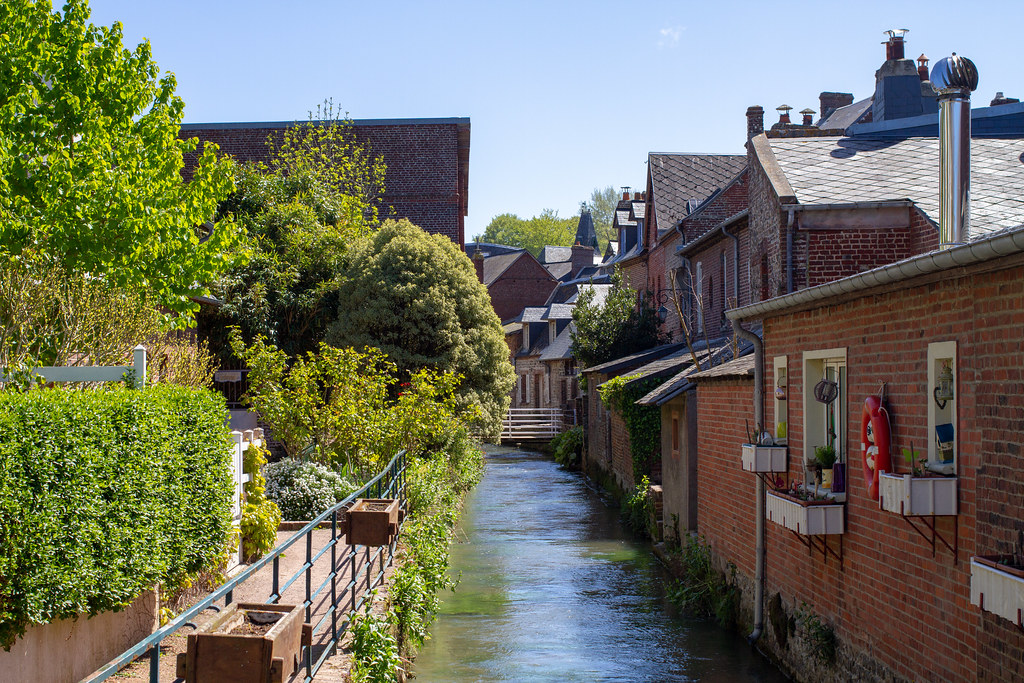
It was crowded with a lot of people. It was Friday, a weekday. Most of them were elderly people, but I think there were many families with children. Is this a country where people can have a free holiday?
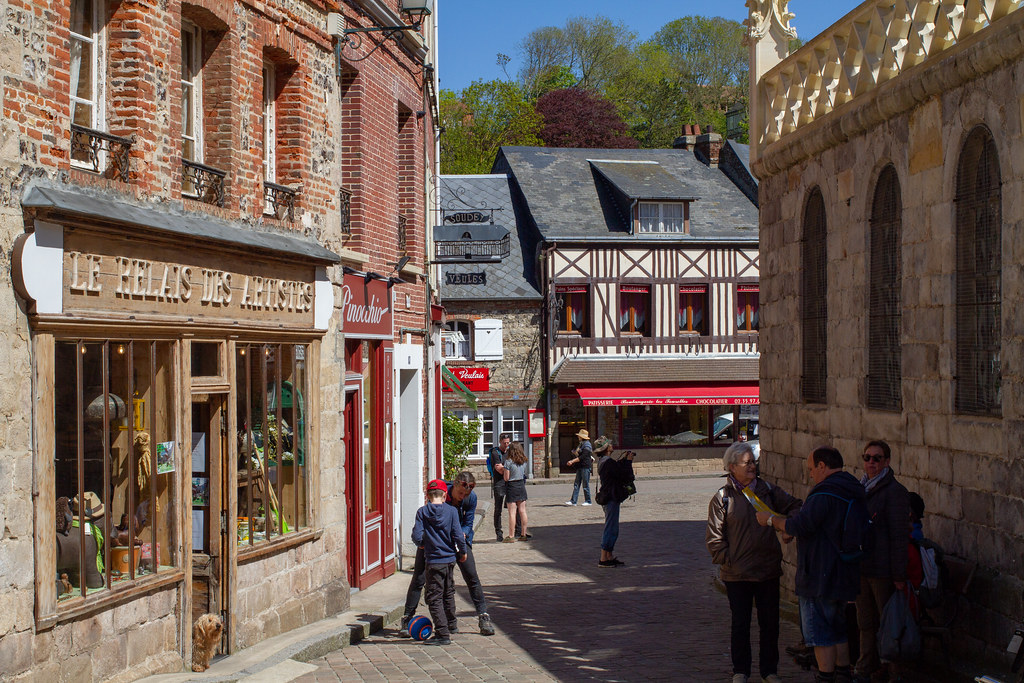
I thought there were relatively more shops and restaurants in the beautiful village.

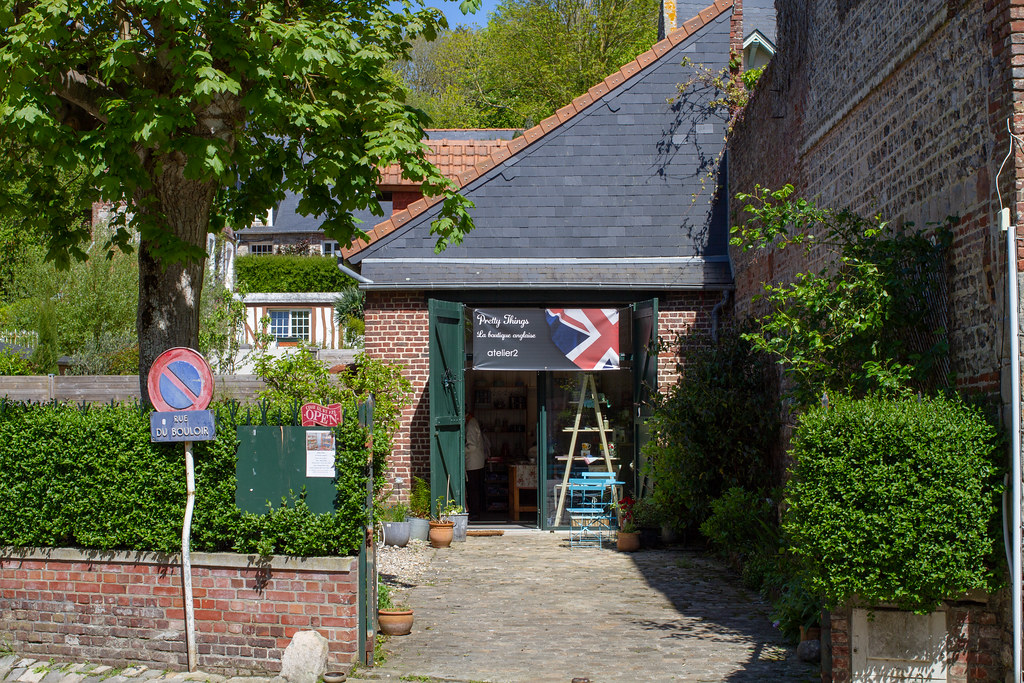
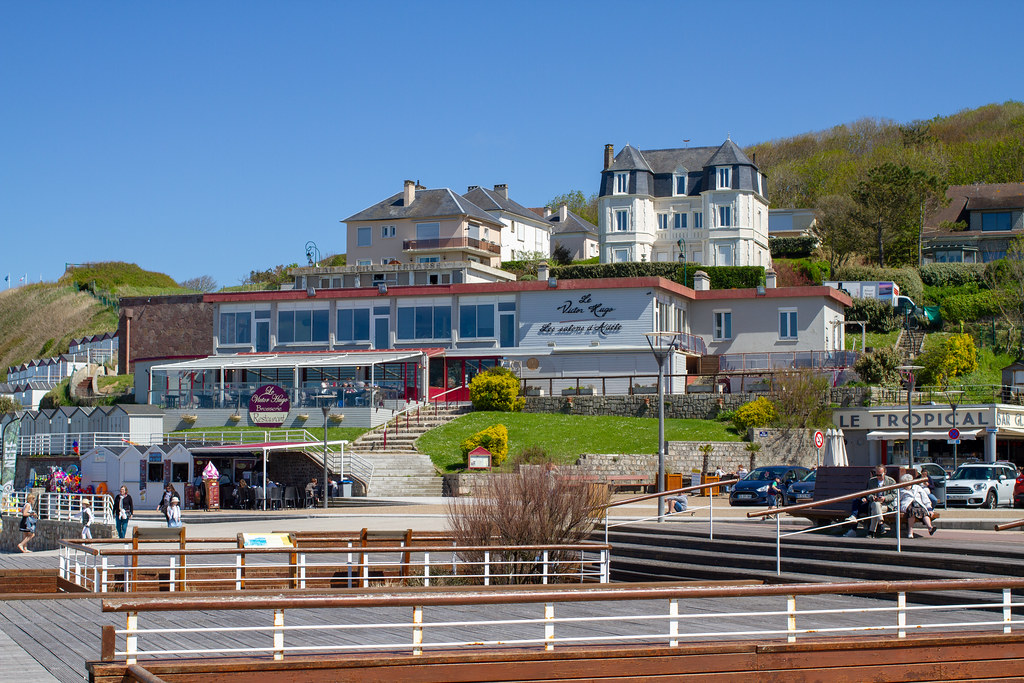
So, I was able to complete the most beautiful village in France after half a year again. But I’m sure it’s going to happen again and again. But it’s a good thing because it gives me a chance to visit France.
